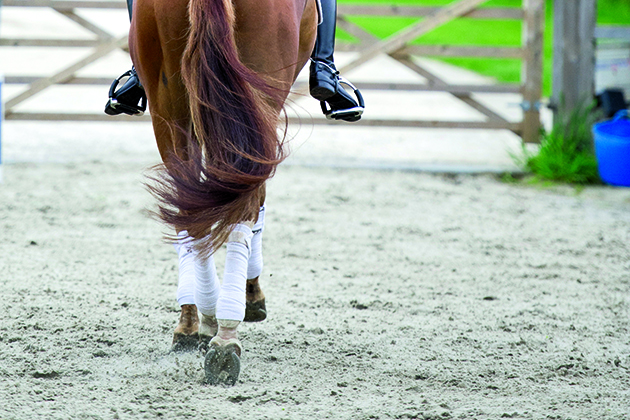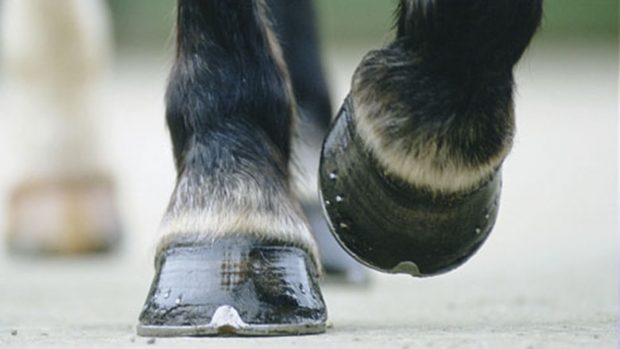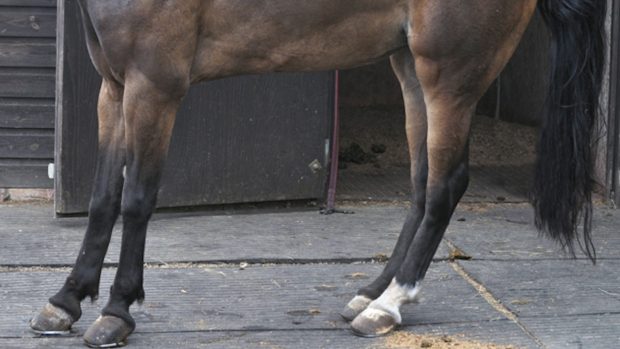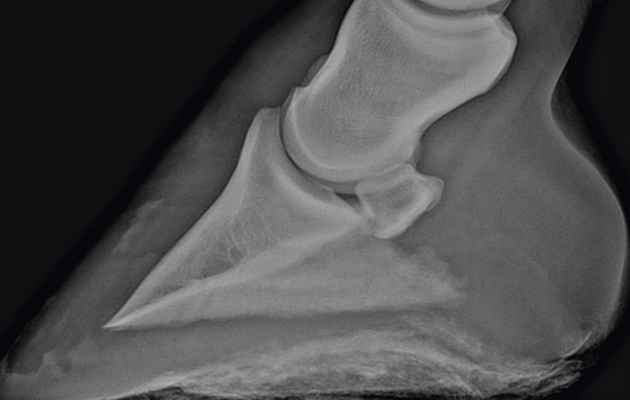Lameness in horses is common and the most frequent reason for a horse to have sore legs is because it has painful feet.
Palmar foot pain, navicular disease, tendon and joint injuries in the foot and chronic hoof bruising are some of the reasons for continuing problems with painful feet.
Pedal osteitis is one reason why a horse may have long-term pain in its feet, but this is a controversial condition that is difficult to diagnose with any certainty, while some orthopaedic experts question whether the condition even exists.
What is pedal osteitis?
Pedal osteitis simply means that the main bone (the pedal bone) enclosed by the horse’s foot is inflamed or bruised.
This condition is mainly seen in forelimbs, probably because they have to carry much more weight than the hindlimbs and, therefore, are more susceptible to trauma.
Horses affected by the condition often have a long history of mild to moderate intermittent forelimb lameness.
Frequently, both legs are affected, which makes the horse sometimes appear sound, except when worked in a circle, or appear to have a pottery gait.
Diagnosis problems
The vet diagnoses pedal osteitis partly by using nerve blocks. The horse will only improve slightly when the heels of the foot are frozen with a local anaesthetic, while the whole foot needs freezing to alleviate lameness completely.
X-rays of the foot also assist diagnosis. The main problem is the wide diversity in appearance of normal pedal bones. In X-rays of pedal osteitis, the most important change seen is that the edge of the pedal bone becomes “ragged”.
Unfortunately, in normal, sound horses, the edge of the pedal bone varies from being very smooth to being extremely ragged. So it is impossible to say with any certainty whether the ragged appearance of the bone is due to disease or is just the normal appearance for that individual horse.
Horses with laminitis, navicular disease, hoof imbalances, chronic subsolar bruising or even chronic foot infections will often have a degree of pedal osteitis.
The vet will carry out a series of tests before he can diagnose pedal osteitis with any confidence.
Corrective shoeing
Co-operation between your vet and farrier can be the best way to treat pedal osteitis. Often, horses with this condition have poor foot conformation and a degree of hoof imbalance.
As a result, the horse’s weight is often not passed equally through the foot, overloading some areas of it.
It is important that this is recognised and the horse’s foot trimmed to try to improve its foot balance.
Corrective shoeing is also important to increase support to the foot as much as possible.
Bar shoes or central support shoes are frequently used to try to achieve this aim.
Recovery prognosis
The prognosis for full recovery is extremely variable. It is often dependent on what actually causes the pedal osteitis and how much improvement can be made to the horse’s hoof conformation by corrective farriery.
Many horses can be maintained in some level of work for several years, although lameness can reoccur repeatedly, often when the going becomes firmer or if the horse does too much work on hard ground.




